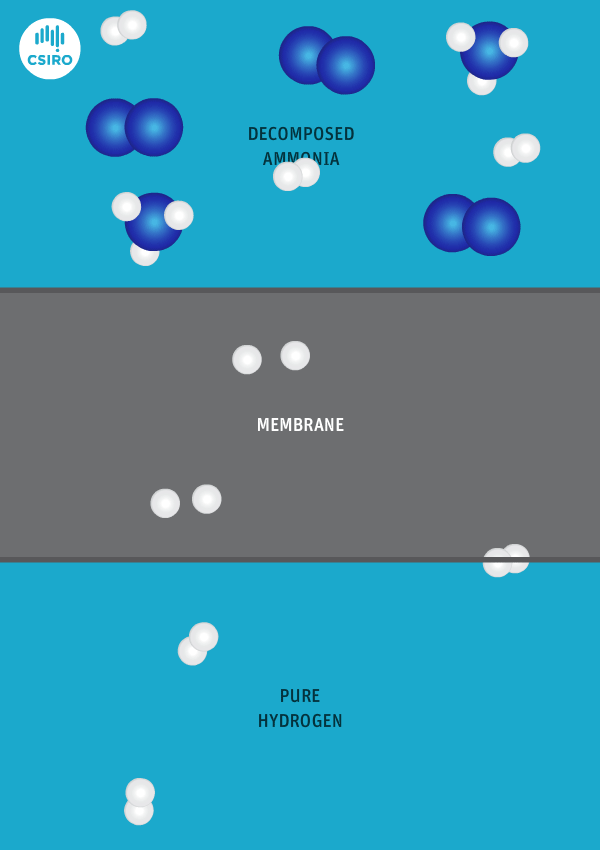Progress toward Ammonia-to-Hydrogen Conversion at H2 Fueling Stations
By Stephen H. Crolius on October 05, 2017
Ammonia Energy Anniversary Issue: a “top five” development in technology advancement
In the last 12 months …
Groups in Australia, Japan, Denmark, the U.K., and the U.S. all made progress with technologies that can be used to convert ammonia to hydrogen at fueling stations. This means that hydrogen for fuel cell vehicles can be handled as ammonia from the point of production to the point of dispensing.
Cracking ammonia: safer, cheaper hydrogen storage and distribution
Many of the world’s most prominent automakers are committed to fuel cells as a primary post-petroleum platform for personal vehicles. No automaker is on record with an analogous commitment to ammonia. For most of the committed companies, “fuel cell” means a device based on proton exchange membranes that requires hydrogen of 99.999% purity.

At face value, this would seem to close ammonia out of one of the future’s major hydrogen use cases. However, the advent of effective and efficient ammonia-hydrogen conversion devices that can bridge the gap between an ammonia-based logistics network and the class of hydrogen-powered cars, puts ammonia right back into the picture.
“Our cracker technology is underpinned by a low-cost metal membrane technology which is uninhibited by ammonia, and infinitely selective to hydrogen, allowing the stringent ISO14687-2 standard to be achieved,” according to Michael Dolan, a scientist at the Commonwealth Scientific and Industrial Research Organization (CSIRO) in Australia.
The idea would be to deploy the crackers at hydrogen fueling stations so that fuel could be delivered to stations in the form of ammonia. Conversion would occur at such times and in such quantities needed to serve motorists without the requirement for substantial hydrogen “inventory.”
Ammonia Energy reporting
- September 2017: BOC / Linde Embraces Ammonia-Based Hydrogen Fueling Technology
- February 2016: Ammonia cracking to high-purity hydrogen, for PEM fuel cells in Denmark
- March 2017: New Technology for Generating Hydrogen from Ammonia
- March 2017: Ammonia Energy Conference Announced for Europe
- February 2017: Hydrogen Fueling Station Development in Japan
- December 2016: REFUEL Ammonia Use-Side Funding Awards
A year in review
To mark the first anniversary of Ammonia Energy, we reviewed the most important developments from the last 12 months. This “top ten” list spans two areas: five are technology advances that will arguably produce the most important opportunities for ammonia energy, and five are economic implementation steps that are arguably the most significant moves toward real-world deployment.
Technology advancement:
- The Dawn of Bio-Ammonia
- Advances in Ammonia-Fired Gas Turbines Open Up Major Use Case
- Overcoming the Selectivity Challenge in Electrochemical Ammonia Synthesis
- Progress toward Ammonia-to-Hydrogen Conversion at H2 Fueling Stations
- Development of Direct Ammonia Fuel Cells
Economic implementation:
- Yara’s Solar Ammonia Plant is a Key Step toward Global Trade in Renewable Energy
- Power-to-Ammonia: the Economic Viability of Ammonia Energy
- Green Ammonia Consortium: Bright Prospects in Japan for Ammonia as an Energy Carrier
- The Maritime Industry Begins Assessment of Ammonia as a Fuel
- Ammonia Energy Gains Recognition from U.S. Department of Energy